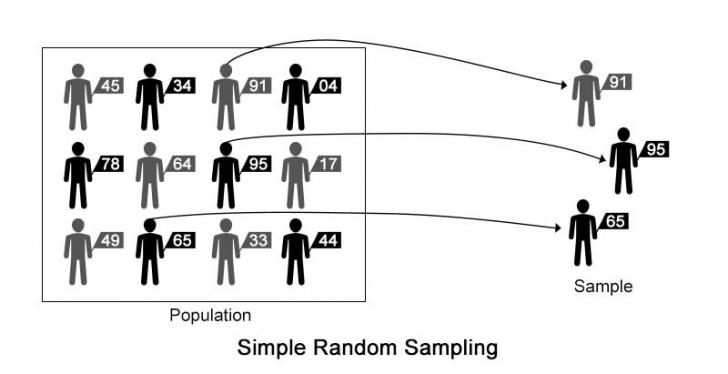Introduction
Suppose that we are going to find out how many of the audience of the ‘Real Madrid vs. Barcelona’ match that was conducted on October 2014 like Lionel Messi the most and how many of them bet on Neymar Júnior as the best footballer in the world.
It is a herculean task to collect the exact data by assessing the views of all the 400 million audience.
So, we go to the stadium and assign random numbers to each person in the audience. We then choose a person from each of the rows who has the highest value among the random numbers assigned to the persons in the same row. This way, we choose the samples and ask them about their views to get an unbiased analysis of what the audience thinks in general. This way of selecting the samples is known as the Simple Random Sampling.
Definition
The process of assigning the random numbers to the elements of the population and selecting some of them by way of certain specific rule (like highest among the local group/row lowest among the group/row etc) is called Simple Random Sampling.
This process provides more reasonable judgment as we exclude the items coming consecutively. In most of the cases, the chances of getting similar items among the consecutive items is very much high. Simple random sampling addresses the issue by avoiding the consecutive data to occur simultaneously.

In the above figure, we first assigned the random numbers to each of the elements and marked the elements with highest assigned number among the elements in the same group (or Row). Then we take only those elements and then proceed for next process of data analysis from the sampled data.
Advantages
-
Better chances that the sample represents the whole population
Simple Random Sampling uses random numbers which ensures that the samples vary as much as the population itself. -
Can be concluded in shorter time duration
This process is simple and short. It takes lesser time to complete. The saved time can be used for analysis and interpretation. -
Costs less money
Once the task of assignment of random number to different items of population is done the process is half done. This process saves cost and time to a great extent and its simplicity ensures that we do not have to spend too many resources on the sampling process itself. We can take any number of samples from this process. - Involves lesser degree of judgment
While assigning the random number to an item of the population, the person assigns the number in a random sequence that means the process is unbiased as it doesn’t involve the judgement of the person performing the sampling. -
Comparatively easier way of sampling
Probability sampling does not involve any complex and long process. Thus this is an easier way for sampling. -
Can be done even by non- technical persons too
Assignment of Random number can be done by any kind of person after a short briefing as this does not involve any lengthy, complex and crucial process
Disadvantages
-
Risks of selecting samples from a few variations only
The surveyor or more correctly, the sampler might be distributing the random numbers based on rules of thumb which will render the sampling ineffective e.g. If a surveyor is appointed to survey about any data relating to family members, there is likely chances that s/he might develop a trend of starting to number from the eldest member to the youngest and numbers will be only increasing or decreasing only. In this case, only oldest or the latest generations will be taken as samples. -
Redundant and monotony
As the surveyor is asked to do a repetitive job to assign the numbers and to take the information, there is likely chances that the surveyor suffers from monotony and the effectiveness of the system will be blurred.
Simple random sampling is an effective, low resource consuming method of sampling that can be used in a variety of situations as a reliable sampling method. With the advent of computers, the problems associated with this method can be even reduced because a computer can be used to generate the samples based on an algorithm that generates the random numbers.